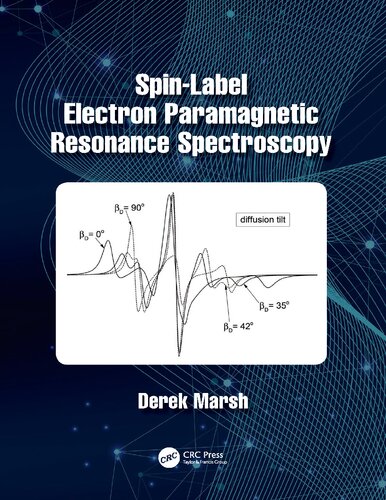

Most ebook files are in PDF format, so you can easily read them using various software such as Foxit Reader or directly on the Google Chrome browser.
Some ebook files are released by publishers in other formats such as .awz, .mobi, .epub, .fb2, etc. You may need to install specific software to read these formats on mobile/PC, such as Calibre.
Please read the tutorial at this link: https://ebookbell.com/faq
We offer FREE conversion to the popular formats you request; however, this may take some time. Therefore, right after payment, please email us, and we will try to provide the service as quickly as possible.
For some exceptional file formats or broken links (if any), please refrain from opening any disputes. Instead, email us first, and we will try to assist within a maximum of 6 hours.
EbookBell Team

4.0
96 reviewsSpin-label electron paramagnetic resonance (EPR) spectroscopy is a versatile molecular probe method that finds wide application in molecular biophysics and structural biology. This book provides the first comprehensive summary of basic principles, spectroscopic properties, and use for studying biological membranes, protein folding, supramolecular structure, lipid-protein interactions, and dynamics. The contents begin with discussion of fundamental theory and practice, including static spectral parameters and conventional continuous-wave (CW) spectroscopy. The development then progresses, via nonlinear CW-EPR for slower motions, to the more demanding time-resolved pulse EPR, and includes an in-depth treatment of spin relaxation and spectral line shapes. Once the spectroscopic fundamentals are established, the final chapters acquire a more applied character. Extensive appendices at the end of the book provide detailed summaries of key concepts in magnetic resonance and chemical physics for the student reader and experienced practitioner alike.
Key Features:
The primary audience is research workers in the fields of molecular biophysics, structural biology, biophysical chemistry, physical biochemistry and molecular biomedicine. Also, physical chemists, polymer physicists, and liquid-crystal researchers will benefit from this book, although illustrative examples used are often taken from the biomolecular field. Readers will be postgraduate researchers and above, but include those from other disciplines who seek to understand the primary spin-label EPR literature.